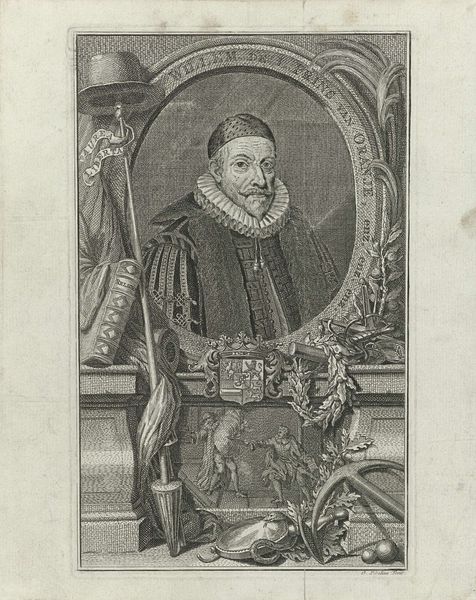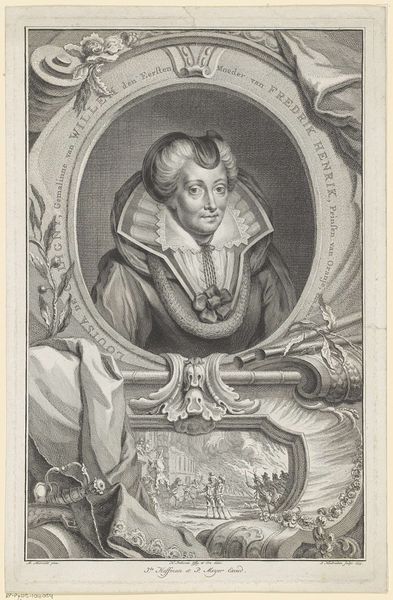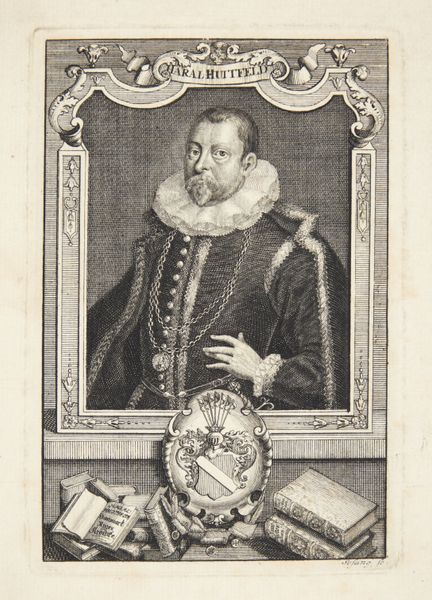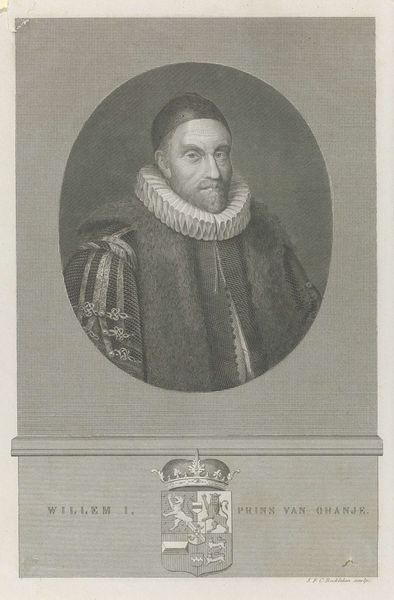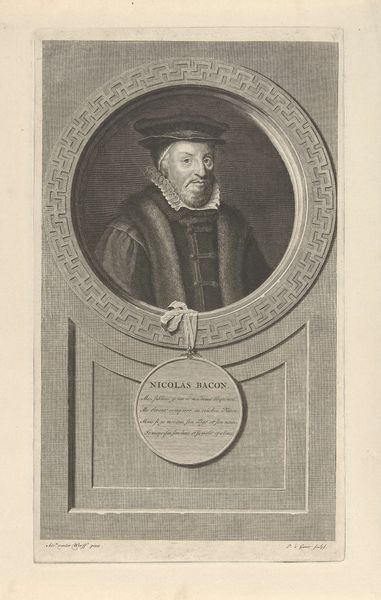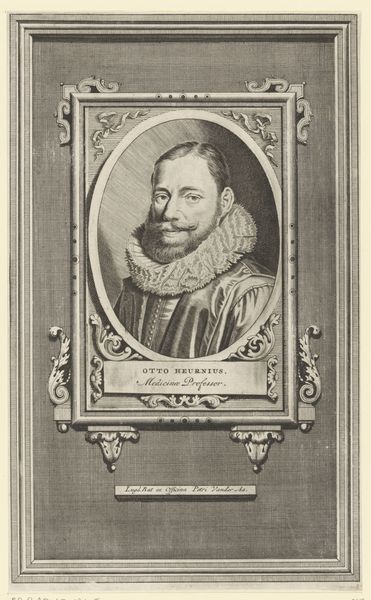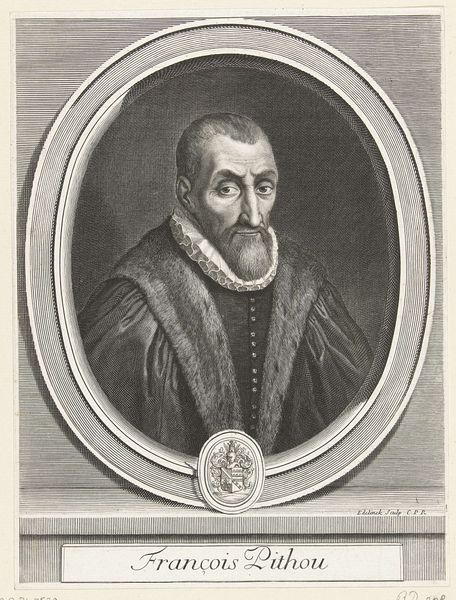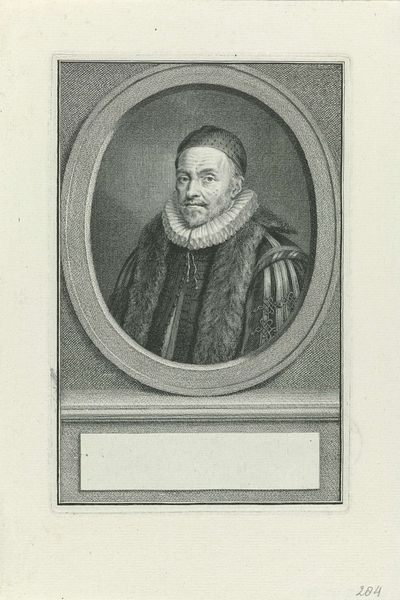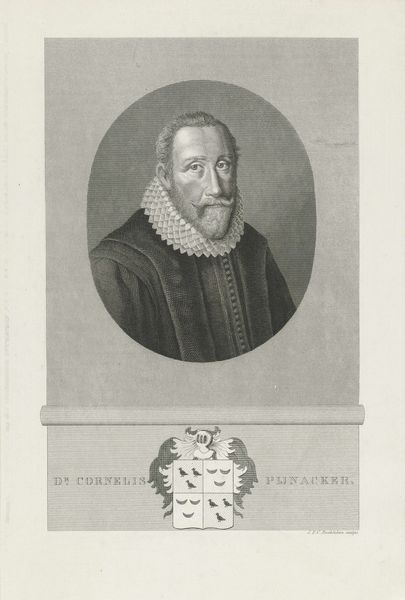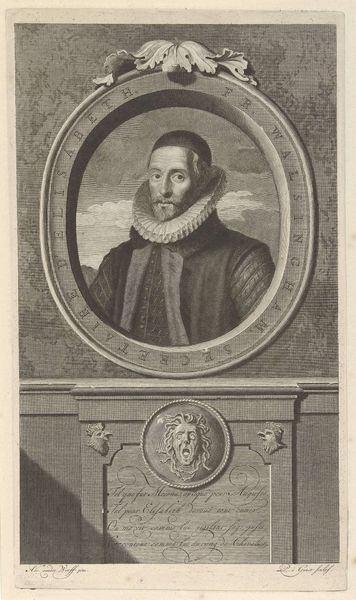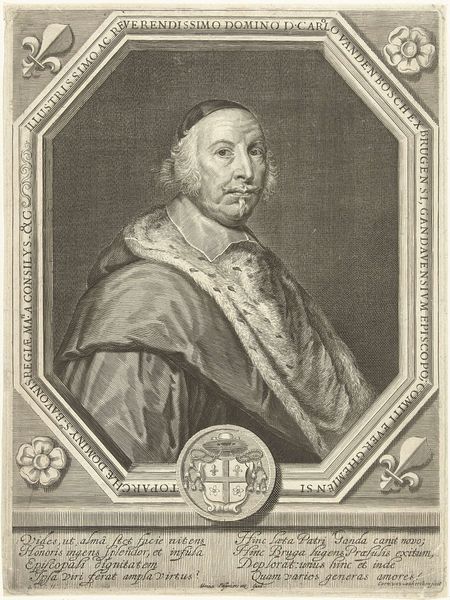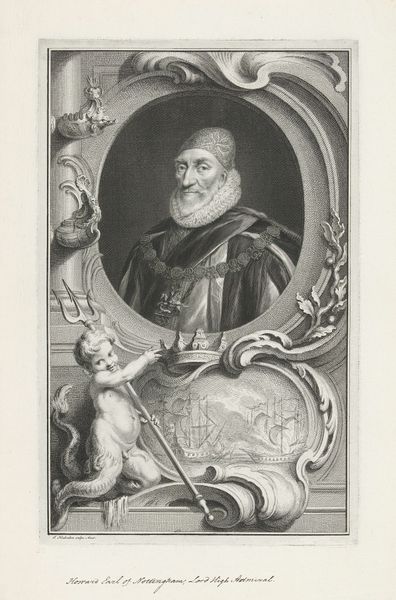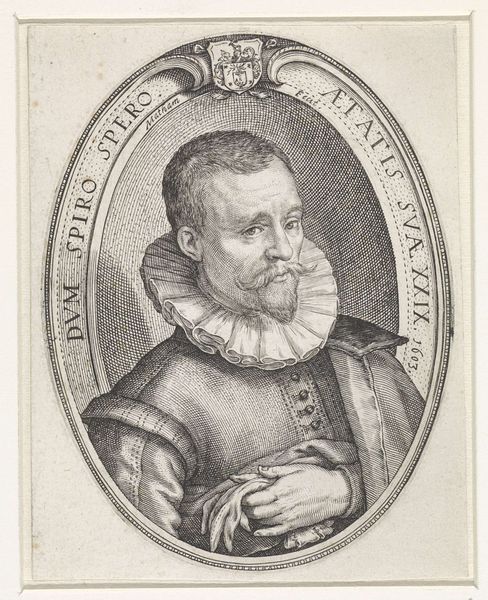
engraving
#
portrait
#
baroque
#
dutch-golden-age
#
history-painting
#
engraving
Dimensions: height 365 mm, width 239 mm
Copyright: Rijks Museum: Open Domain
Curator: Here we have an engraving from around 1748. The piece, created by Pieter Tanjé, presents a "Portret van Willem I, prins van Oranje"—William I, Prince of Orange. Editor: My immediate impression is of something grand and staged, though monochrome—like a scene carefully frozen in time, all in shades of grey. The detailing around the portrait is very rich. Curator: Yes, the engraving medium allows for intricate detailing. Notice the elements framing William: flags, weaponry, and symbolic figures below. These aren't mere decorations; they evoke his role as a leader. Editor: Definitely. The formal, almost symmetrical arrangement lends a sense of authority. That heavy hat, those imposing volumes - they speak volumes about power, legacy and position. It feels calculated to communicate might and permanence. Curator: Absolutely. William I is presented not just as an individual but as an embodiment of the Dutch Revolt. The coat of arms, the classical references in the vignettes... they root him in history. It suggests ideas around legitimacy and dynasty. Editor: And it's interesting how the sharp lines of the engraving create such stark contrast. See how it separates the figure of William from everything else. It isolates him as something larger than life against a flurry of detail. Is the goal here a timeless representation, or is there some commentary? Curator: Likely the former, I believe. The visual vocabulary used—drawing from the Baroque and even leaning towards Dutch Golden Age aesthetics—serves to create a monumental image, a lasting representation for generations to come. Editor: Hmm, I still get the feeling that there’s some ambiguity amidst the grandeur. Perhaps it’s in those figures below, the subtle tension that makes you wonder about the events that secured such an image of power in the first place. Curator: Perhaps you're right, the suggestion of drama hints at the complex historical reality behind the idealized portrait. It serves as a visual touchstone, prompting reflection on the past. Editor: Yes, even without color, its careful, intricate detailing can start a fascinating debate, opening up the narrative. Curator: Indeed. The image endures, resonating with ideas of leadership, history, and perhaps, the constructed nature of legacy.
Comments
No comments
Be the first to comment and join the conversation on the ultimate creative platform.
